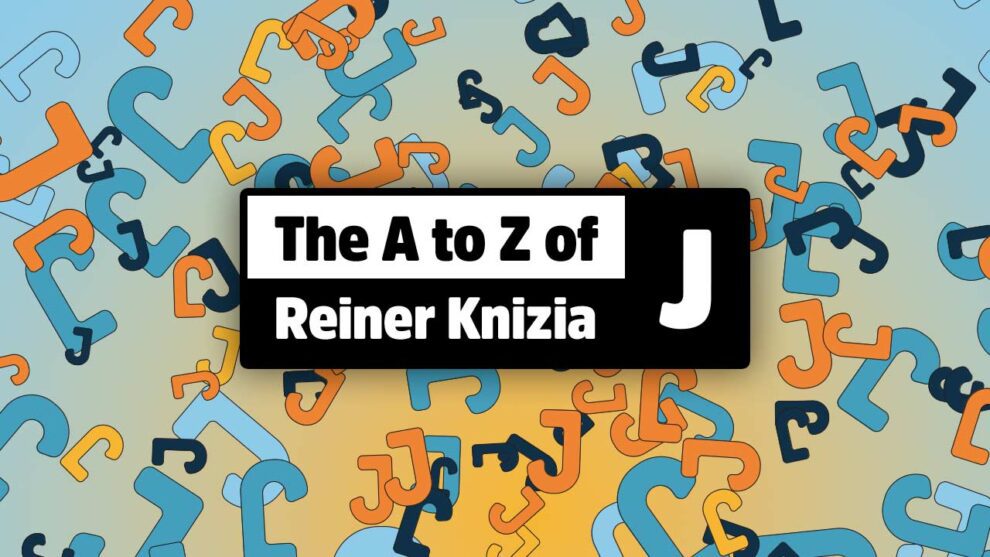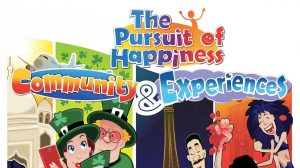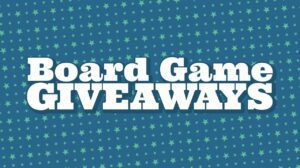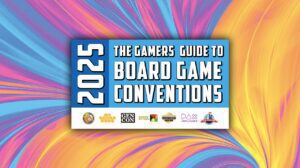The year 2025 marks the 40th anniversary of Dr Reiner Knizia’s career as a board game designer – his first published game, Complica, was released in a magazine in 1985 (although he’d self-published games before then as well).
Since then, Knizia has designed and published over 800 games and expansions, many of which are critically acclaimed. Put simply, Reiner Knizia is the landscape on which all other modern designers build their houses.
To celebrate Knizia’s career and back catalogue, Meeple Mountain are taking things back to basics to consider the ABC of Reiner Knizia: one game for each of the 26 letters of the alphabet.
This time: The Letter ‘J’.
J – Jäger und Sammler (2010)
Jäger und Sammler (translated into English as ‘Hunters and Gatherers’) answers the unasked question: What if Hey, That’s My Fish! but more?
In fairness, Jäger und Sammler builds upon Günter Cornett’s 2003 hit Hey, That’s My Fish! and Knizia’s own earlier works, including 2001’s Africa. Indeed, when discussing Knizia’s tile-laying oeuvre Knizia super-fan Laszlo Molnar said that Jäger und Sammler also “feels like a cleverly disguised Through the Desert-like game”.
Whilst not complicated, Jäger und Sammler is a rare instance of Knizia taking an existing idea and increasing the complexity. Players move their four ‘Hunter and Gatherer’ pieces around a board populated with tiles, collecting every tile they move a piece from, making the board smaller and more fragmented.
So far, so Hey, That’s My Fish! but instead of just collecting fish, players are collecting food, weapons with which to kill mammoths, and artifacts that scale in points as you collect them. There are also paths that never disappear and caves that help with travel.

Most interesting are the four camps that need to be visited in the first ‘summer’ half of the game, since in the second ‘winter’ half you only have as many hunter gatherers to move around as camps you visited. This ‘game of two halves’ process, where moves in the first half determine starting positions in the second half is something Knizia returned to with 2018’s Blue Lagoon, a game many feel is the informal sequel to 1998’s Through the Desert. Pleasingly, for those that like such things, Jäger und Sammler falls almost exactly in the middle of these two designs, both in terms of gameplay and chronologically.
Jäger und Sammler is not only part of Knizia’s extensive tile laying family, but also has an identical twin in the form of 2009’s Zombiegeddon. Both games were developed from the same original prototype, with German publisher AMIGO creating Jäger und Sammler and USA publisher Twilight Creations, Inc. creating Zombiegeddon.
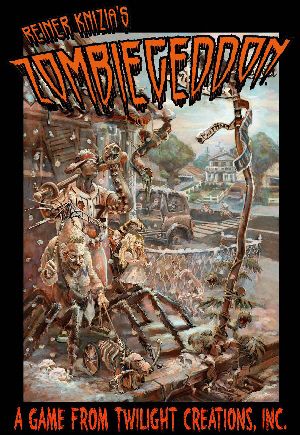
The difference between the two games is almost entirely in the setting: preparing for and surviving a neolithic winter or a zombie apocalypse. In fact, they’re so mechanically similar that Bernd Keller, Head of Game Development at AMIGO, played Zombiegeddon and didn’t notice the gameplay difference at first. The only real rules difference? In Jäger und Sammler there are path tiles that make movement easier, whilst in Zombiegeddon these are replaced with barricades that restrict movement. Who says Reiner Knizia games don’t have themes?
This isn’t the first time on this list that we’ve seen mechanically similar games tweaked for the North American and European audiences. Battle Line, covered when looking at Knizia’s Letter B, is almost the same as its immediate predecessor Schotten Totten. Keltis and Lost Cities: The Board Game are a similar pairing. They highlight Knizia’s awareness of business and markets, frequently driven by publisher desires.
Recently No Pun Included’s Efka Bladukas argued that all games are political. Or at least, all games, being works of art, are informed by the culture and views of the designers and those of the players, and that the process of interpreting and ascribing meaning, overtly political or not, is ‘fun’. Whether you agree or not, it’s a refreshing stance in a tabletop space where comments like ‘keep politics out of board games’ can be found regularly in forums. As Ian O’Toole says in the first comment under that video, “art isn’t pure intent, nor is it pure received experience, it’s a conversation between the two… I can see game mechanisms as similar to these metaphorical frameworks, because they communicate a feeling, around which you can build meaning if you so desire”. Let’s desire, just for a moment.
What does it say about the cultures of two continents at the end of the 2000’s that the same starting point resulted in two very distinct products?
In the United States, Twilight Creations, Inc. turned the game into a grimy apocalyptic survival story. Of course they did, since Twilight Creations, Inc. is a publisher specialising in horror. Their first success was 2001’s Zombies!!! which has spawned dozens of expansions and sequels. The 2000’s were also when zombies rose to mainstream prominence in Western popular culture. Zombies are often allegories for our deepest fears, a political commentary on capitalism, consumerism and conformity. As many have argued, it’s no coincidence that the mainstream rise in zombies coincided with a decade of uncertainty, financial crisis, terrorism and George W. Bush’s ‘war on terror’. Zombiegeddon is an early part of the zombie-themed tabletop influx that peaked in the mid-2010s (of the approximately 1,500 zombie games and expansions listed on BoardGameGeek, Zombiegeddon sits within the earliest 150 entries).
AMIGO similarly focused on survival in their version, but turned their gaze to the start of humanity’s rise rather than our fall. Post-war Germany is famously conflict-averse and this is reflected in the school of game design that rose to prominence there in the 1990s and 2000s, to which Jäger und Sammler adheres. German-style board games, aka Eurogames, “generally feature indirect player interaction, lack player elimination, and provide multiple ways to score points” (Wikipedia). Euro designs involve building or growth, often with historical settings. The rise of humanity is a particularly fertile topic, with games such as Stone Age, Kingdomino Origins, Paleo and Carcassonne: Hunters and Gatherers using the setting to good effect.
Then there’s the difference in gaming cultures in the late 2000’s. Family-friendly board gaming is big in Germany, whilst around the time of Zombiegeddon’s release the resurgence of the tabletop scene was very much a niche thing. Hobbyists can engage with bleak apocalyptic designs in a way that families cannot (see the colourful family game Zombie Kidz Evolution for an example of making zombies ‘safe’), making Zombiegeddon’s grim setting less appropriate for the German audience.

Given all this, it’s hardly surprising that the most capitalist nation in the world engaged at the time in a global war on terror would choose to zombify the design, whilst a publisher from the conflict-averse and family friendly Germany would go for early human existence. That there haven’t been other mechanically matching but thematically dissonant games from Knizia since speaks to the dissolution of the Ameritrash-Eurogame divide and the fusing of the sensibilities from both schools of thought in this Silver Age of board gaming.
These days neither design is particularly easy to get hold of, but of the two we’d recommend tracking down Jäger und Sammler (and not just because according to the rules ‘the hairiest player starts’). It’s by far the better looking game, pleasing not just on pure aesthetics but also in terms of practicalities – the grimy colours of Zombiegeddon make distinguishing the different tiles deeply unpleasant. We’ll leave it to AMIGO’s Keller to have the final word on the matter: “I am pretty confident however, that you might like our illustrations better”.
Join us for Just a few Joyous Japes
Knizia’s ‘J’ inventory isn’t jam-packed but there are a few games jostling for your attention:
James Rizzi – A curious card shedding game named after New York pop artist James Rizzi and not published by KOSMOS. Or, at least, not physically published: this was originally going to be published by KOSMOS but ended up being released in 2005 as a print-and-play instead. Happily, you can play this two-player card-shedding game of chicken using a standard deck of playing cards and discover for yourself a solid, if undramatic, little game. What does it have to do with James Rizzi or his art? No idea!
Jumbo Grand Prix – 1998’s Jumbo Grand Prix may be a very minor Knizia but it feels like a distant ancestor of 2017’s Fantasy Realms by designer Bruce Glassco (itself the inspiration for Jamey Stegmaier and Alexander Schmidt (II)’s Red Rising released in 2021). In all three games players try to build a small but competitive hand of cards that work well together, simply by discarding and drawing new cards. Jumbo Grand Prix might suffer in comparison to those latter games but its multi-round format with players creating their scoring ‘hands’ whilst also preparing their hand for the next race is an interesting twist on the genre.
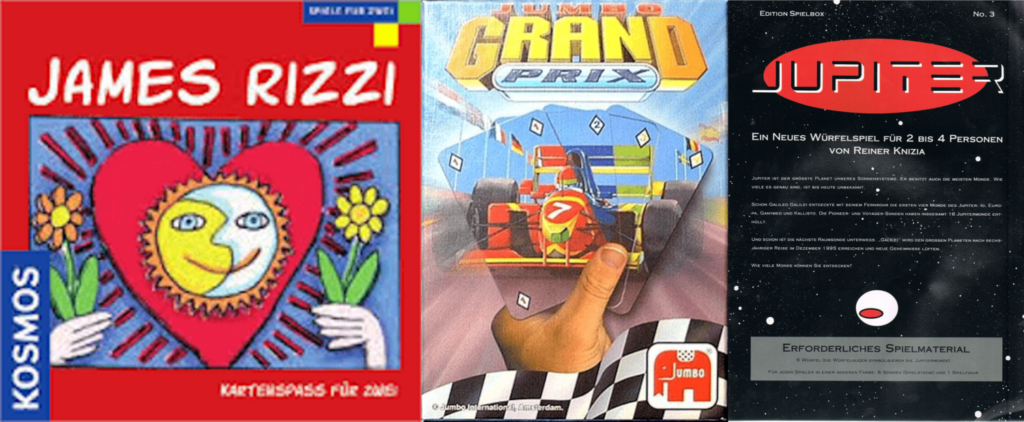
Jupiter – Originally published in Spielbox Magazine in 1993, Jupiter is a 15 minute, 2-4 player abstract game that you can play with a handful of dice, some counters and a piece of paper. And you should as there are some nice ideas here if abstracts are your space jam (you can find the rules on BoardGameGeek here). Gameplay consists of placing dice and counters and scoring for the counters and dice already in the same rows and columns. Like James Rizzi above, this has nothing to do with its namesake, which is probably just as well since the number of known moons identified around Jupiter has only increased since the game was first released.
–
And so our jaunt through ‘J’ ends. Are we just joyless and jaded jerks or are we justified in our judicious choices and you’re filled with jubilation? What ‘J’ game would you have chosen? Let us know in the comments below and check out the rest of the Reiner Knizia Alphabet here!


